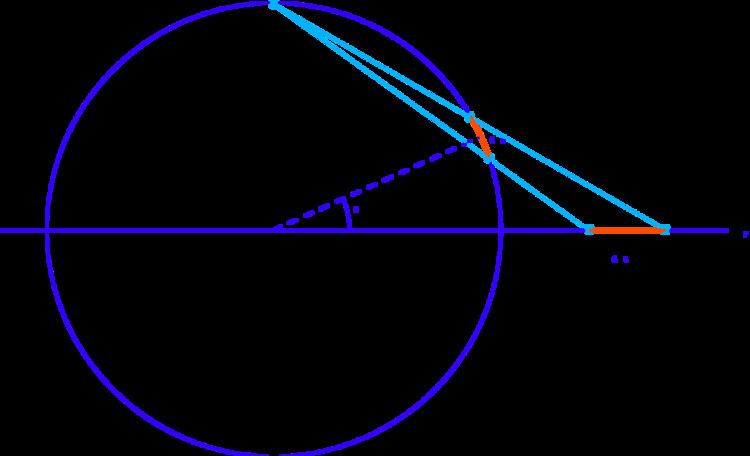 | ||
In integral calculus, the tangent half-angle substitution is a substitution used for finding antiderivatives, and hence definite integrals, of rational functions of trigonometric functions. No generality is lost by taking these to be rational functions of the sine and cosine. Michael Spivak wrote that "The world's sneakiest substitution is undoubtedly" this technique.
Contents
Euler and Weierstrass
Various books call this the Weierstrass substitution, after Karl Weierstrass (1815 – 1897), without citing any occurrence of the substitution in Weierstrass' writings, but the technique appears well before Weierstrass was born, in the work of Leonhard Euler (1707 – 1783).
The substitution
One starts with the problem of finding an antiderivative of a rational function of the sine and cosine; and replaces sin x, cos x, and the differential dx with rational functions of a variable t and the product of a rational function of t with the differential dt, as follows:
Derivation
Let
By the double-angle formula for the sine function,
By the double-angle formula for the cosine function,
The differential dx can be calculated as follows:
First example
Second example: a definite integral
In the first line, one does not simply substitute
Geometry
As x varies, the point (cos x, sin x) winds repeatedly around the unit circle centered at (0, 0). The point
goes only once around the circle as t goes from −∞ to +∞, and never reaches the point (−1, 0), which is approached as a limit as t approaches ±∞. As t goes from −∞ to −1, the point determined by t goes through the part of the circle in the third quadrant, from (−1, 0) to (0, −1). As t goes from −1 to 0, the point follows the part of the circle in the fourth quadrant from (0, −1) to (1, 0). As t goes from 0 to 1, the point follows the part of the circle in the first quadrant from (1, 0) to (0, 1). Finally, as t goes from 1 to +∞, the point follows the part of the circle in the second quadrant from (0, 1) to (−1, 0).
Here is another geometric point of view. Draw the unit circle, and let P be the point (−1, 0). A line through P (except the vertical line) is determined by its slope. Furthermore, each of the lines (except the vertical line) intersects the unit circle in exactly two points, one of which is P. This determines a function from points on the unit circle to slopes. The trigonometric functions determine a function from angles to points on the unit circle, and by combining these two functions we have a function from angles to slopes.
Hyperbolic functions
As with other properties shared between the two functions, it is also possible to construct a similar form:
See here for more information.
